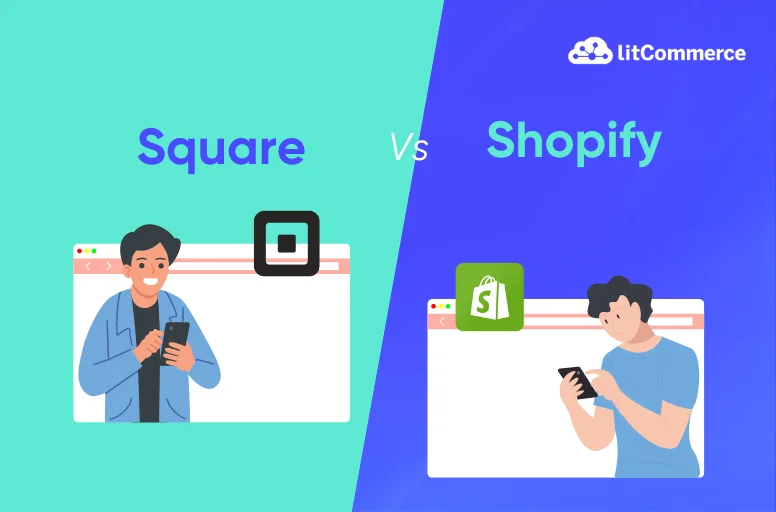Are you trying to choose between Shopify or Square? You may be selling stuff online or need a tool for online and in-person sales. Well, both these two platforms have easy-to-use point-of-sale (POS) software and eCommerce features. However, each of them offers a unique set of features designed for specific business needs.
This article breaks down the comparison between Shopify vs Square based on 7 key features to help to define which one is right for your business.
- Pricing
- Ecommerce features
- Square POS vs Shopify POS
- Hardware cost
- Third-party apps and integrations
- Ease of use
- Customer support
Let’s explore what Square vs Shopify brings to the table in this digital commerce showdown.
Shopify vs Square: Which one is better?
Shopify vs Square: A Quick Overview
To kick things off, let’s dive into a brief overview of each platform: Shopify and Square.
Shopify overview

Trusted by over 4.6 million businesses across 175 countries, Shopify is well-known as a leading eCommerce platform that offers essential features for businesses to start, run, and grow their online stores. This platform provides product, order, inventory, and shipping management features. According to Shopify’s own data, about 1 trillion total sales have been generated on this platform since Day 1.
Here are the detailed benefits and drawbacks of Shopify vs. Square:
Pros:
- Essential eCommerce features for product, inventory, orders and shipping.
- Ability to connect to various selling channels like social media and marketplaces.
- Strong marketing features in the entry-level plan, including abandoned cart recovery.
- AI tools for generative text description, store management, and more.
- Extensive app marketplace for third-party integrations (13000+ app integrations).
- Flexibility in payment processing with other providers.
- One-click checkout with Shop Pay.
Cons:
- No free plan is available.
- Lack of offline capability for in-person sales.
- No special POS apps for appointments or restaurants.
Square overview
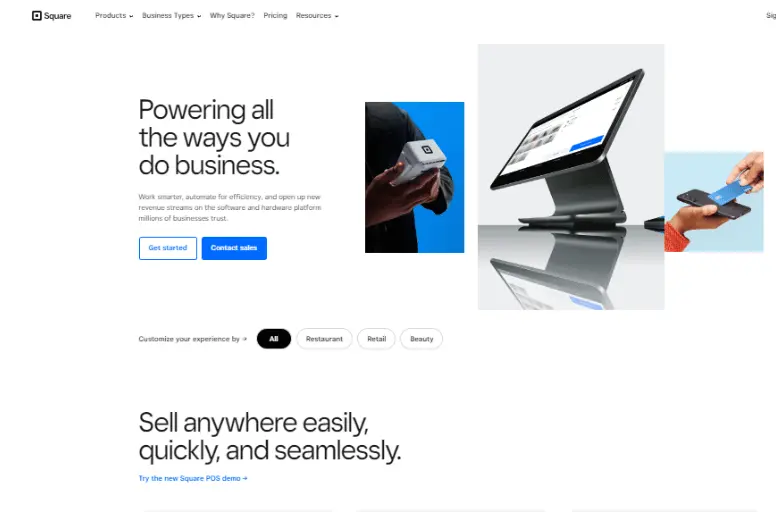
Square, on the other hand, is often praised for its point-of-sale (POS) system for brick-and-mortar businesses. The platform integrates seamlessly with Square’s own POS hardware, which has made it a top choice for businesses that prioritize in-person transactions. Then, this platform also expanded its offerings to include eCommerce solutions. As of 2023, Square is used by over 2 million active sellers worldwide.
Here are the advantages and disadvantages of Square vs. Shopify:
Pros:
- Quick and free online store setup.
- Free magstripe card reader included.
- Standalone payment solutions for online, in-store, and mobile transactions.
- Reliable offline mode.
- Diverse hardware options for mobile payments.
- Industry-specific products and add-on features available.
Cons:
- Lack of 24/7 phone support.
- Limited built-in eCommerce features.
- No support for multiple currencies.
Sell More with LitCommerce
LitCommerce supports you in easily connecting various sales channels and managing them in one dashboard. All your order and inventory data are synced, eliminating inaccurate data across channels.
Shopify vs Square: 7 Key Factors Comparison
Choosing between Shopify vs Square is a big decision for your business. Let’s compare these two platforms in detail to see which is better.
In short, Shopify is better for eCommerce, while Square is better for physical stores.
Features | Shopify | Square |
Monthly fees | – Starter: $5 per month – Shopify Plus: Start at $2,000 per month | – Free: $0 per month |
Payment processing fees | – Online payments for Advanced, Shopify or Basic plan: 2.4%, 2.6% or 2.9% + $0.3, respectively | – In-person: 2.6% + $0.1 per transaction |
Ease of use | Moderate | Easy |
Square POS vs Shopify POS | – Free POS app with eCommerce subscription | – Free POS software |
Ecommerce features | – Strong online store tools include built-in payments, inventory management, shipping options, etc. | – Basic eCommerce features |
Marketing features | – Integrated blogging, SEO tools | – Customer reviews |
Hardware cost | – Tap & Chip card reader: $49. | – Square magstripe-only card reader: $0 (extra readers cost $10 each) |
Third-party apps and integrations | Over 8,000 app integrations | Nearly 200 app integrations |
Contract length | Varies. Most plans are month-to-month, but you can choose a yearly plan. | No contracts needed with Square. |
Customer support | – 24/7 phone and chat support; | – Phone and chat support during business hours |
#1. Pricing
A crucial factor for any business is cost. Let’s dive into Square vs Shopify fees.
Shopify
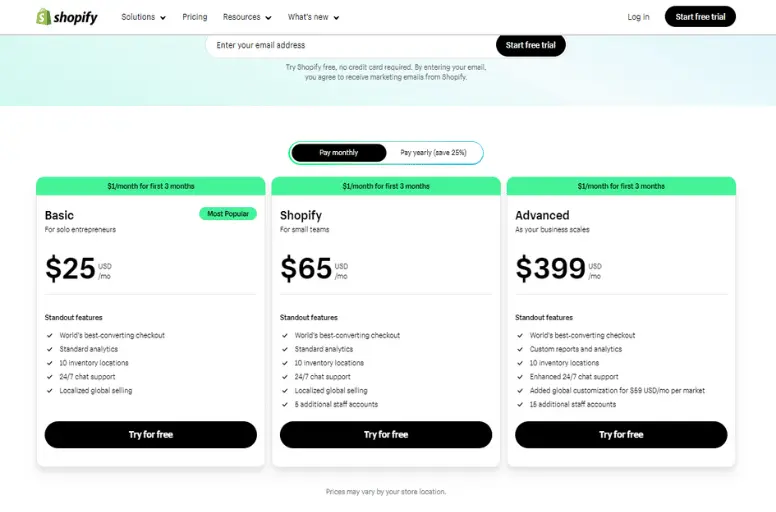
Shopify offers seven monthly plans:
- Basic: $25 per month
- Shopify: $65 per month
- Advanced: $399 per month
- Shopify Plus: Start at $2,300 per month
- Starter:
- Retail: $89 per month
- Enterprise commerce: custom
Besides monthly plan pricing, Shopify also charges payment processing fees.
For online payments, the additional fees are as follows:
- Basic plan: 2.9% + $0.3
- Shopify plan: 2.6%
- Advanced plan: 2.4%
For in-person payments, the additional fees are:
- Basic plan: 2.7%
- Shopify plan: 2.5%
- Advanced plan: 2.4%
Note: These pricing tiers apply specifically to e-sellers in the USA. If you’re selling in other countries, Shopify may have different plans for you.
Square

Square keeps it simple with clear pricing and no hidden fees, making it one of the strongest Shopify competitors. You can easily add or change add-ons whenever, and there are no lengthy contracts.
- Free: $0 per month
- Square Appointments Plus: $29 per month
- Square Restaurant Plus: $60 per month
- Square Appointments Premium: $69 per month
- Square Retail Plus: $89 per month
- Premium: Custom
Square also offers various plans to suit your different business needs:
- Online ordering and eCommerce: Free, with upgrades from $29–$79/month.
- Marketing: Starts at $10/month for text and $14/month for email.
- Team management: Free, or upgrade to Team Plus at $35/month, per location.
- Payroll: $35/month + $6 per employee.
- Loyalty program: Starts at $45/month, per location, for up to 500 loyal visits.
Similar to Shopify, Square also charges processing fees:
- In-person: 2.6% + $0.1 per transaction
- Online: 2.9% + $0.3 per transaction
- Manually entered: 3.5% + $0.15 per transaction
- Invoices: 3.3% + $0.3 per transaction
With its free monthly fee with basic features, Square is excellent for new or smaller sellers. On the other hand, Shopify suits online merchants or larger retailers looking for robust eCommerce features and flexible plans.
#2. Ecommerce features
When it comes to Square eCommerce vs Shopify, Shopify takes the lead over Square. Let’s break down Shopify vs Square eCommerce features in more detail.
Shopify
While Shopify has fewer POS hardware and software options, its eCommerce features outshine Square’s. With 100+ ready-made website themes, you can customize them to your liking. Though some themes may cost, Shopify’s customization lets you hire a designer for a pro site.
Besides, Shopify supports SEO with a built-in blog, allowing you to create SEO-friendly content. While it offers customizable descriptions, meta tags, automatic sitemaps, and Google Analytics integration, its URL structure isn’t fully customizable. Creating sub-categories can be complex, posing an SEO challenge for some users.
Square
Square users can use Square Online to create an online store. When comparing Square online store vs Shopify’s, the first one lacks some built-in marketing features, and its eCommerce app marketplace is not as extensive. While not as customizable as Shopify, Square Online doesn’t require coding experience.
However, Square Online allows businesses to connect with platforms like Instagram for social media sales. Customers also have the option for a buy-now-pay-later choice during the checkout process on websites.
Sell Everywhere from One Place
With LitCommerce, connect your Shopify or Square store to top marketplaces like Amazon, eBay, Etsy, and TikTok. Manage everything effortlessly!
#3. Square POS vs Shopify POS
When it comes to POS systems, Square vs Shopify stand out with their unique strengths. Let’s break down Shopify vs Square POS, focusing on the features that make them effective for different businesses.
Shopify
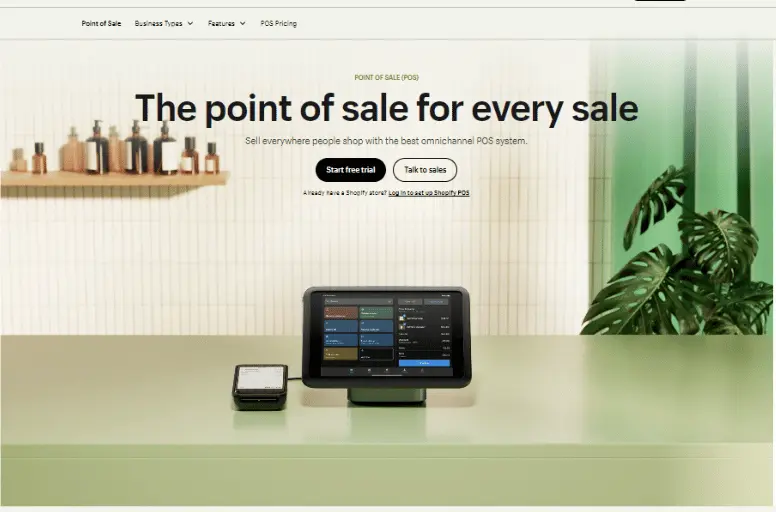
For new eCommerce ventures and online multichannel sellers, Shopify POS offers excellent value. It provides all the essential features for running a connected storefront or pop-up shop alongside your Shopify online store.
However, keep in mind that some basic features, like daily sales reports and custom receipts, are only available with the Pro plan.
Square
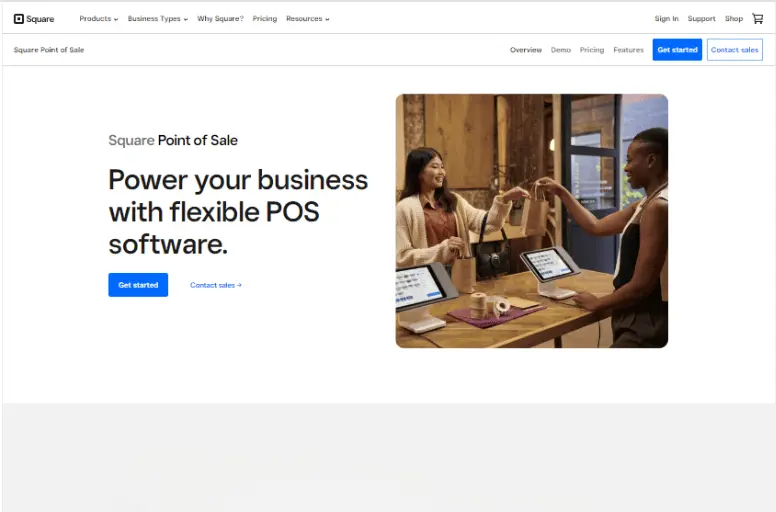
When it comes to Shopify POS vs Square, Square is better for smaller shops relying only on in-person sales. It caters to various formats, including restaurants and retail, with specialized POS systems. Square’s hardware selection is also more diverse, offering five types of card readers and a “Tap to Pay” option for iPhones, eliminating the need for a reader.
With Square, you have autonomy over your POS setup, and there are no long-term contracts, making it an excellent choice for small businesses exploring POS options.
#4. Hardware cost
Now, let’s talk about the Shopify vs Square POS pricing. Your choice of hardware is crucial for how smoothly your business runs. So, we’ll break down what each platform offers, helping you pick the hardware that fits your business needs and budget.
Shopify
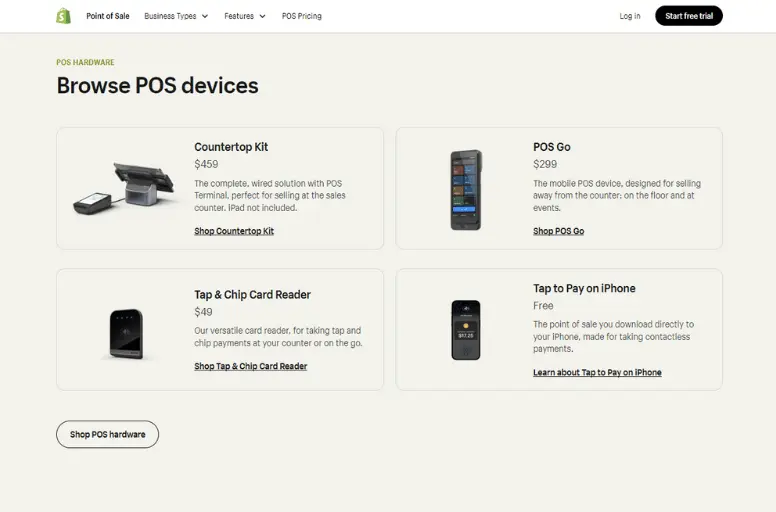
Shopify’s hardware, powered by its POS app, is designed to make sales easy anywhere, accept popular payments, and foster lasting customer relationships. Check out the main options:
- $49 for Tap & Chip card reader: Versatile for tap and chip payments.
- $89 for POS Go Dock: Combines with POS Go for a dedicated countertop payment terminal.
- $299 for Shopify POS Go mobile device: Great for selling away from the counter.
- $349 for Shopify POS Terminal: Top-notch for checkouts.
- $459 for Counter Kit: Full wired solution for the sales counter.
Square
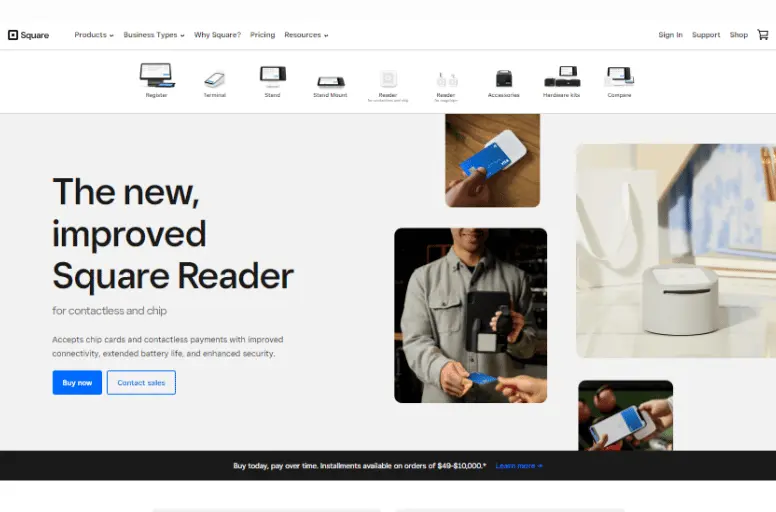
Square caters to businesses of all sizes with hardware options (works with Square’s free POS software) at different price points:
- $0 for Square magstripe-only card reader ($10 for extra readers or Tap to Pay on iPhone): Swipe credit cards on your smartphone or tablet with this magnetic stripe reader, absolutely free.
- $49 + for Square Reader contactless and chip card reader: Accept contactless and card payments easily, featuring longer battery life, improved connectivity, and enhanced security.
- $149 for Square Stand iPad POS or Square Stand Mount (iPad not included; monthly financing available): Transform your iPad into a powerful point of sale with an intuitive, customer-friendly checkout and integrated payments — no additional readers needed.
- $299 for Square Terminal mobile card reader with built-in printer (monthly financing available): Your all-in-one solution for credit card payments and receipts, right at your fingertips.
- $799 for Square Register two-screen system (monthly financing available): The most comprehensive point-of-sale system with two user-friendly displays, easy software options, and built-in payments.
Ultimately, Square’s hardware options are great for businesses looking for versatility and cost-effectiveness. Shopify’s hardware, on the other hand, is ideal for established retailers or those emphasizing advanced POS capabilities and a seamless checkout experience.
#5. Third-party apps and integrations
For online sellers, apps and integrations are essential for adding extra features to your store. So, in this aspect, is Square or Shopify better? Let’s see our comparison:
Shopify

Shopify has a big eCommerce app store with over 13,000 apps to power your store. Whether you need to manage your store data with tools like BulkFlow or expand your sales channels using platforms like LitCommerce, there’s an app for every need. They include both free plugins and paid apps starting at $15 per month. Some paid apps may be pricey, but they bring significant benefits to the platform.
Square
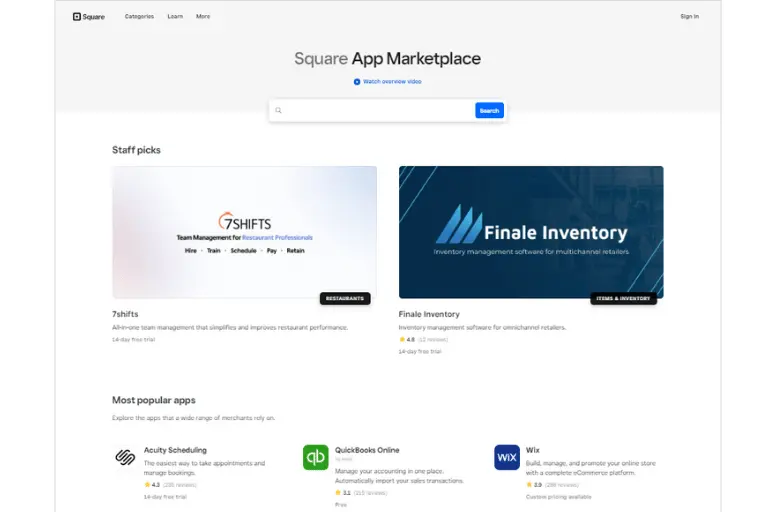
On the other hand, Square offers e-commerce integration and hosting with a more limited selection of around 200 apps. You can use Square for managing inventory and orders, and its reporting dashboard gives insights into your business.
So, if you need a lot of options and custom features, go for Shopify’s diverse integrations. But if you’re a small business and want simple, essential tools, Square’s focused apps are the way to go.
#6. Ease of use
Square lets you create an online store and start selling within hours, thanks to its straightforward store management functions. While it’s basic, it gets the job done. On the other hand, Shopify offers robust eCommerce features but might take more time to set up.
So, should you choose Square or Shopify? Check out the Square website vs Shopify to see which is easier to use.
Shopify
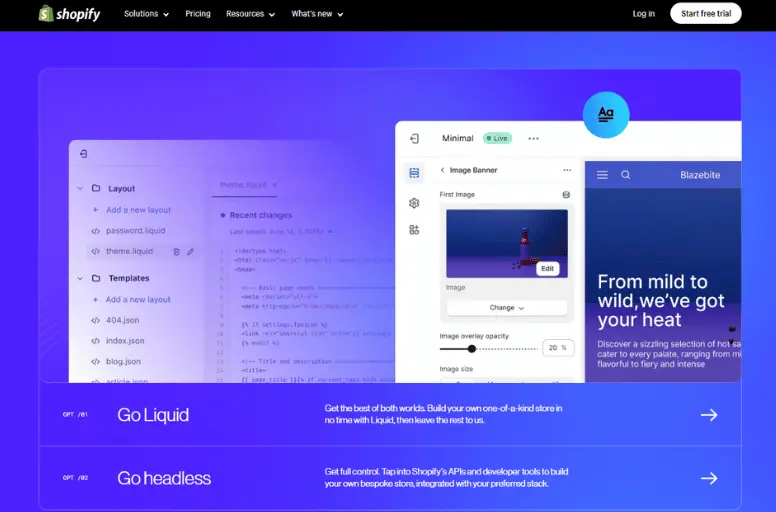
Balancing functionality and simplicity, Shopify impresses with its features and an easy-to-use interface. Even without technical skills, you can start your online store effortlessly. Daily tasks on Shopify remain simple, but customization is limited without coding skills due to predefined website sections.
Square
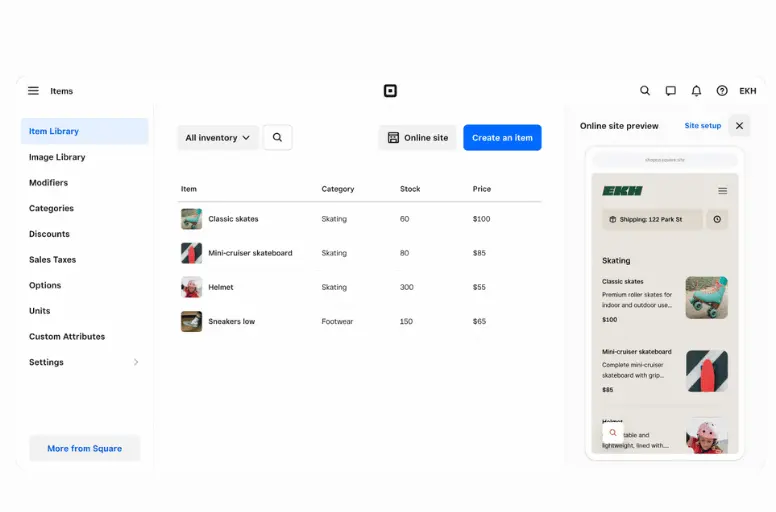
When comparing Shopify vs Square Online’s website builder, the second one is definitely easier to navigate. You can modify existing templates in real-time, making changes easily. The setup guide provides automated prompts, letting you launch your store without technical help.
You can watch video tutorials on the user dashboard or jump straight into building your website with the setup wizard.
Also, check out our detailed guide on how to set up Square to see how simple it is.
#7. Customer support
Both Square and Shopify offer great customer service. You can reach them through live chat, phone, email, or their community forum. But, there are some differences to consider.
Shopify
Shopify stands out with 24/7 phone support and a dedicated agent if you’re on the Shopify Plus plan. As your business grows, you can even hire a Shopify Expert for coding or design help, giving your website a professional touch.
Square
If top-notch customer service is a priority, Square might not be the best fit, as some users express dissatisfaction with its limited service hours.
Square’s live chat and phone support hours are limited:
- Weekdays: 9 a.m to 9 p.m EST
- Weekends: 11 a.m to 8 p.m EST
Email responses take 24 to 48 hours.
Shopify or Square? Go Multichannel
Whichever platform you choose, LitCommerce lets you list on top marketplaces with effortless inventory sync and easy order management. Increase your reach and boost your sales.
Square Vs Shopify – FAQs
No. Square excels in in-person sales, while Shopify dominates online stores. However, you can integrate Square with Shopify using LitCommerce, merging data from both platforms into a database. The choice depends on your business needs. Choose Shopify if you want to sell online, in-store, or on social media and need an all-in-one solution. Square is better if you need a simple way to accept payments and prefer no long-term contract commitments. No, they don’t connect by default, but you can link Square to Shopify’s POS using third-party apps like LitCommerce. This makes your data sync automatically. For example, if you sell something in-store with Square, you can set up automation to update your Shopify online store’s orders and inventory.
Should You Choose Square or Shopify?
Choosing between Shopify vs Square is a win-win. Both cater to small and medium-sized businesses with eCommerce and in-store POS features. That said, each platform has its own advantages.
If you aim to emphasize eCommerce sales and plan to expand features as your business grows, Shopify might be the better choice.
However, if you prioritize additional POS features and credit card reader choices and you’re not too concerned about online store flexibility, Square could be your top pick. If you still need help picking a suitable platform, feel free to reach out to us anytime. We’re here to help.

